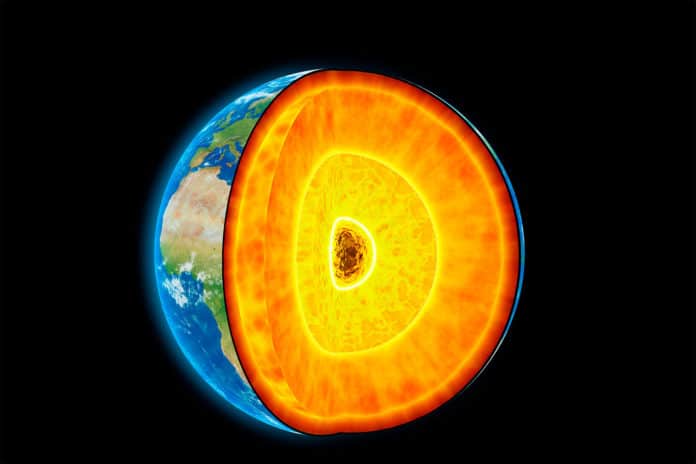Earth’s inner core (IC) is less dense than pure iron. This indicates the presence of light elements within it. However, the states of these elements in the inner core are rarely considered.
In a new study, a joint research team led by Prof. He Yu from the Institute of Geochemistry of the Chinese Academy of Sciences (IGCAS) has discovered that the Earth’s inner core is not a normal solid. Instead, it is composed of a solid iron sublattice and liquid-like light elements, also known as a superionic state.
These light elements are highly diffusive in iron sublattices under inner-core conditions.
A superionic state is an intermediate state between solid and liquid. It exists widely in the interior of planets.
The research team used high-pressure and high-temperature computational simulations based on quantum mechanics theory. They found that some Fe-H, Fe-C, and Fe-O alloys transformed into a superionic state under inner-core conditions.
Light elements in superionic iron become disordered and diffuse like a liquid in the lattice. On the other hand, iron atoms remain ordered and vibrate about their lattice grid, forming the solid iron framework. The diffusion coefficients of C, H, and O in superionic iron alloys are the same as those in liquid Fe.
Prof. He Yu, the first and corresponding author of the study, said, “It is quite abnormal. The solidification of iron at the inner core boundary does not change the mobility of these light elements, and the convection of light elements is continuous in the inner core.”
The team also calculated the seismic velocities in these superionic iron alloys. They found a significant decrease in shear wave velocity.
Co-first author Sun Shichuan from IGCAS said, “Our results fit well with seismological observations. It is the liquid-like elements that make the inner core soften.”
Journal Reference:
- Yu He, Superionic iron alloys and their seismic velocities in Earth’s inner core, Nature (2022). DOI: 10.1038/s41586-021-04361-x
